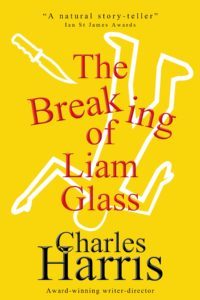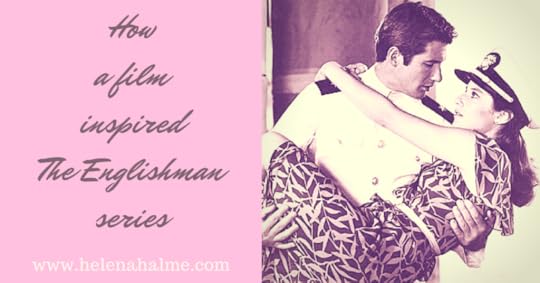Helena Halme's Blog, page 14
August 10, 2017
New Book Releases: The Breaking of Liam Glass by Charles Harris
Welcome to the second of my series of New Book Releases. This month I’m talking to Charles Harris, a best-selling author and award-winning writer-director, whose debut novel, The Breaking of Liam Glass, was published by Marble City in June 2017.
Please start by telling us about your writing. How would you characterise your fiction, and non-fiction?
I never intended to be a writer. My first love was directing film – the only problem was that to direct I needed scripts, and the only person I could afford to hire to write them was myself!
So I began writing rather reluctantly, feeling more than a little out of my depth, but gradually something seemed to work and at the same time I began to enjoy it.
The non-fiction rose out of my experiences writing the screenplays: two books on screenwriting and a little gift-book of police slang, which was a labour of love.
Your latest release is a novel, The Breaking of Liam Glass. How would you describe the book?
When it comes to fiction, I write what I like to read, which is literature with a good plot – but which also engages my mind. I like stories that entertain me and make me think.
The Breaking of Liam Glass is not so much a Whodunnit as a darkly comic What-They-Did-After-It.
The story of what happens after a teenage footballer is stabbed on an estate next to London’s Regents Park and, with an eye to the main chance, a desperate young journalist sets out to use him as a stepping stone to a job with the tabloids.
The Breaking of Liam Glass is a satire set in present-day London. Tell us about your research for this book?
I enjoy research tremendously. For Liam Glass, I spent time with journalists, politicians and police, learning how they worked and lived, and bouncing story ideas off them to see how they reacted. The most difficult, surprisingly perhaps, was getting into tabloid newsrooms.
I still can’t mention the name of one tabloid, where I managed to get in while the editor was away! I am, however, happy to thank the Daily Mirror who were amazingly helpful – from the lowliest junior to the editor himself.
I’m always fascinated by how authors find their subject matter. What inspired you to write The Breaking of Liam Glass?
I wanted to write a story about a tabloid newspaper. The red-tops are, at the same time, enormously valuable and often very dangerous – one day they can run wonderfully useful campaigns, such as the Mirror’s knife-crime campaigns, and then, the next day, they can vilify someone for no good reason, such as the Hillsborough victims or the McCanns.
I started by going back to one of my very first successful short stories, about a teenager who’s been mugged, and then added in the journalist, who begins to manipulate the story to make it more saleable, with devastating effects.
The comedy – and the tragedy – of it is that he’s clever enough to know the deep water he’s getting into, but not clever enough to stop it happening.
Your background is in film and script-writing. How do you think your previous experience has helped you in writing this novel?
Screenwriting can be very frustrating. You spend so much of your time dealing with idiots, having overlong meetings and waiting years for finance that never comes. You can spend your life never actually making anything. Looking back what it gave me was the freedom to make all my mistakes out of the public eye. The great thing about writing books is that you don’t need finance to make it and the only idiot you need to deal with (at least initially) is yourself.
Screenwriting is rewriting, and as I rewrote I was learning essentials about structure, character and storytelling that have turned out to be valuable in writing novels.
However, there are obvious differences. Screenwriting is collaborative. Writing a novel is like being the entire film crew yourself. You have to find the locations, build the sets, set the lighting, record the sound and act every single part. It’s a very different kind of challenge.
Which other writers have most influenced you?
How long have you got? I fell in love with Joseph Heller’s writing at an early age – especially Catch 22. Jane Austen is finally being recognised for the great writer she is. Dickens. I was put off him at school and have finally “discovered” him to my great delight.
Then there’s Tom Wolfe, Evelyn Waugh – and I’ve just today bought No Good Deed – the latest book by the wonderful John Niven, one of the very few writers publishing satirical novels here today.
What books do you have on your bedside table at the moment?
I’m reading a comedy – In the Matter of Isobel – by a friend of mine, Paul Mendelsohn, and He Said, She Said – a thriller about an eclipse that my local bookshop sold me when I told them I was going to the States to try to see this year’s total eclipse.
And Proust, which I’m reading a few pages at a time. It’s mad, overlong, ridiculously complicated, and yet there’s something that holds you – is it style? Acute observation? Characters? Maybe I’ll know when (if) I ever get to the end.
What is your experience of being an author of both non-fiction and fiction books? Do you have any good tips for aspiring authors?
Non-fiction is much harder at the start. You need to develop a really strong, saleable, writeable idea. But having done that, writing it and marketing it is, in my experience, relatively straightforward.
Fiction is deceptively easier to begin with, but it’s exhausting to write. And much harder to market.
Tips? Read voraciously. Write massively, enough that you discover what kind of writer you really are. Get the best feedback you can and listen to it. You don’t have to follow it, but you must listen to it!
What are you working on at the moment?
After the launch of Liam Glass, I’m finally getting back to my next novel, which is a more serious psychological crime-noir.
What do you like to do in your spare time?
Aikido. It’s a martial art that I drifted into looking for something that was both a meditation but also active. I didn’t expect to stay, let along become a black belt. I thought black belts were a different kind of being, not normal human beings.
But when I step on the mat, I forget just about everything in the world outside. For two hours there is only aikido.
Where can we find more about The Breaking of Liam Glass and about Charles Harris, the author?
My own blog: www.charles-harris.co.uk has all about me, my writing and my books, as well as articles about writing, book reviews, etc. You can also follow me on Twitter at @chasharris and on Facebook: www.facebook.com/charlesharris008
Thank you for having me.
Books by Charles Harris can be found on Amazon and in good book shops.
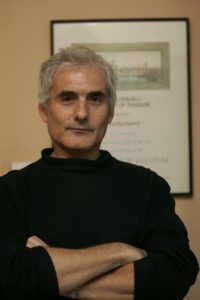 Charles Harris Photo/Lefteris Pitarakis
Charles Harris Photo/Lefteris PitarakisJoin Nordic Romance Readers on Facebook
NEW: If you’d like to talk books on Facebook, you can now join a new group called Nordic Romance Readers. Just tap the link below and ask to join this closed group where we discuss good Nordic romance reads, and where I will be posting news and offers, including exclusive excerpts from my forthcoming new release, out in October 2017.
The post New Book Releases: The Breaking of Liam Glass by Charles Harris appeared first on Helena Halme Author.
August 3, 2017
Tom of Finland
 In Finland, homosexuality was illegal up till 1971, and was only declassified as an illness in 1981. The age of consent was equalized to 16 in 1999. Now Tom of Finland creator, Touko Laaksonen, who began drawing his homoerotic images in the 1950s, is celebrated across the land.
In Finland, homosexuality was illegal up till 1971, and was only declassified as an illness in 1981. The age of consent was equalized to 16 in 1999. Now Tom of Finland creator, Touko Laaksonen, who began drawing his homoerotic images in the 1950s, is celebrated across the land.
A new film about Laaksonen’s life, directed by Dome Karukoski and starring Pekka Strang in the title role, has also been hitting the multiplexes this year.
Walt Disney of Gay Culture
Laaksonen, whose style has inspired musicians and artists around the world with the leather look being sported by Freddie Mercury, among others, wasn’t always so popular in his native country. Now described as The Walt Disney of gay culture, his sexual and artist’s life was led in the shadows in Finland, something which the film, the first biopic of his life, portrays well. But all that has changed in the last few years.
Stamps and Bed Linen
[image error] Laaksonen and his erotic images were commemorated in a Finnish stamp collection in 2014 and
Laaksonen and his erotic images were commemorated in a Finnish stamp collection in 2014 and 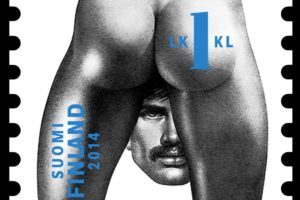 with a collection of linen by Finlayson. (This is a Finnish company whose most famous products thus far had been linen portraying Moomin Trolls, the famous cartoon characters created by Tove Jansson.) The collection includes Tom of Finland towels, sheets, aprons and canvas bags adorned with Laaksonen’s head-turning sketches.
with a collection of linen by Finlayson. (This is a Finnish company whose most famous products thus far had been linen portraying Moomin Trolls, the famous cartoon characters created by Tove Jansson.) The collection includes Tom of Finland towels, sheets, aprons and canvas bags adorned with Laaksonen’s head-turning sketches.
The following year, in 2015, the largest newspaper in Finland, Helsingin Sanomat, had an advert on its cover, with a message to the new Baccalaureate graduates. A boy in a graduate cap is tucked in between Tom of Finland bed sheets with the caption,
“Congratulations to the graduates of life. The future of a small country lies in the hands of their talented youth. Be brave, challenge and question. Believe in yourself, make big things happen and be happy.”
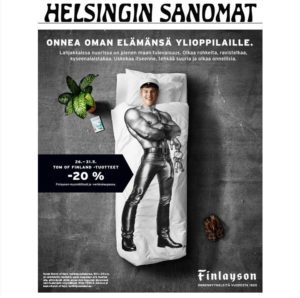
I’m proud of 100-year-od Finland
Something like this would have been unheard of in the Finland I left behind in the early 1980s. Even ten years after homosexuality had been legalized, being gay was something no-one talked about, let alone admitted to. I myself didn’t hear about Tom of Finland until years later after I’d moved to the UK, and saw his images on the internet. I guess I’ve lived a sheltered life, but I’m sure many of my generation were equally unaware of this fabulous subculture that existed in Finland and elsewhere.
While I’ve been exploring gay culture and the social attitudes towards sexuality in the early 1990s in the UK and in Finland for my latest novel, I’ve been taken aback how differently homosexuality was viewed and written about in the press only 27 years ago.
It’s wonderful to see how attitudes have changed – at least in my native country and in Britain. I am hugely proud of Finland and of Laaksonen. He is one of the many talented people that my small country of Finland has bred.
This is a good foundation for the future of a country that celebrates its 100th year of Independence in 2017!
Would you like a FREE book?
Sign up to my mailing list here and get a copy of THE FINNISH GIRL. Described as ‘Nordic Lolita’, it’s a tale of coming of age and sexual awakening.
5***** ‘Wonderfully Intimate and honest,’ Pauliina Ståhlberg, Director of the Finnish Institute.
The post Tom of Finland appeared first on Helena Halme Author.
July 27, 2017
Helena’ Best Reads: The Other Us by Fiona Harper
Welcome to a new feature called Helena’s Best Reads. Once per month, I’m going to introduce you to a book that I particularly loved. It could be a novel, a non-fiction book, or even a poetry collection that I just could not put down.
This month, my best read is The Other Us by Fiona Harper.

There’s a time-travelling housewife …
I don’t usually read fantasy – I only got into Harry Potter because my children were of that age. I don’t think I’ve ever watched a whole episode of Doctor Who, nor am I a fan of Game of Thrones. Even reading the Finnish national epic, Kaleva, which is full of magical characters and events, I sometimes hear myself mutter, ‘Yeah, right!’ (In Finnish obviously). It isn’t that I lack imagination, oh no.[image error][image error]
I make up stories that are ‘real’
Take yesterday. The Englishman and I’d been in town to meet up with friends. Suddenly on our way home, when changing trains on the tube, my husband pulled me aside.
‘What,’ I said, ‘is this some kind of a new short-cut to the platform?’
In the maze that is the London underground tunnelling system, he was leading me down an escalator with a ‘No Entry’ sign above it. The Englishman prides himself in knowing which routes to take to minimise the travelling time, something we joke about. I, on the other hand, prefer not to change trains even if it means I spend a few more minutes on the journey.
‘No,’ he said, looking quite serious, so I followed him without complaint (which is rare). While we were making our way back to the platform and the tube line we’d just come from, he explained that a man who’d been staring at him across the aisle on the tube carriage we’d just left, had followed us onto the first escalator and stopped to stand uncomfortably close behind him on the way up. We took different (longer) route home, while the Englishman, now feeling a bit embarrassed told me ‘It was probably nothing.’
I had spotted the man staring at my husband on the train but hadn’t seen him follow us out into the tunnel. But I understood, the guy had unnerved me too with his staring. In these times of high terror threat level in London, you’ve got to be careful. We considered whether we should contact the transport police but felt we really had nothing to report. ‘A man looked at me oddly then got off the train at the same station and stood too close to me on the escalator,’ sounds a bit ridiculous, we agreed.
But my head was now full of questions. What if, on our return home we found there’d been a knife attack on the tube line we’d decided not to take? What if the man was a terrorist who’d just been sizing up who to attack? In that case, why hadn’t he done anything there and then? Why wait and follow us out of the train? If he wasn’t a terrorist (which was unlikely!) what had been the man’s problem? Did the Englishman remind him of someone? Was it a case of mistaken identity? Or was he just one of those people who stare at others while working something out in his head? The incident became a story in my head, I had a beginning of a scene, then a loose plot for a spy thriller – or even a romance. The guy with the stare could be connected to the woman somehow and was acting oddly in a jealous rage.
But even if I make these stories up in my head, the scenarios are always rooted in reality, in something that I believe could happen, however unlikely. My feet are firmly planted on the ground, without me suddenly falling through it into another world. In my stories, I delve into the reality of life, in all its fabulousness. To me the world we live in is crazy enough; I don’t need to create ‘other worlds’ or time-travelling characters, or fantastical creatures.
The Other Us is different
But back to the book. In spite of my disinterest in the fantasy genre, I absolutely loved The Other Us, especially once I saw that the main protagonist, Maggie (or Meg in one of her time zones) struggled with the same concerns real people in the real world do. Don’t get me wrong, I do understand that most of fantasy (if not all) deals with real issues, and addresses real wrongs in the real world – or are about the human condition. But in fantasy, the fight is often against some great threat to the survival of the human race, or something similarly big and dangerous.
[image error][image error]Not so in The Other Us. Maggie, the heroine, is searching for the key to a perfect loving relationship. Of course, this is a Big Thing in life and is treated as such in the book, but because of the domestic – almost mundane – setting, I could identify with the protagonist’s concerns, even if I don’t believe time-travel can be real.
Would you be able to change your life if you had a second chance?
In The Other Us Maggie gets just such a chance. She is in an unhappy marriage and when her grown-up daughter flyes the coop, she starts to fantasize about an old boyfriend. Her confidante, a controlling best friend, Becca, wants to attend a university reunion, but Maggie is afraid what meeting her old flame might do to her. When Maggie is magically transported to her student days she gets an opportunity to make different choices in life. But will she choose wisely? While she is flung back and forth in time, seesawing her way through a life in two different scenarios, without any control over her time-travel, can Maggie influence her own happiness as well as improve the lives of the people close to her? And who does that happiness really depend on?
I thoroughly enjoyed this novel and would recommend it to even those of you, like me, who are not readers of fantasy. This book is a romance, really, just told slightly differently in several time zones.
The Other Us b Fiona Harper
Published by HQ, 2017
Kindle £2.99/Paperback £5.99
Over to you
What was the best book you read recently? Comment below and get the conversation going!
The post Helena’ Best Reads: The Other Us by Fiona Harper appeared first on Helena Halme Author.
July 24, 2017
Lose yourself in free books
You may have noticed that I’ve been off the grid a little this month. There is a perfectly wonderful reason for this virtual absence. The Englishman and I welcomed a little baby girl, our first grandchild, into the world on 5th of July (she just missed being born on 4th July) and since then, I’ve been completely obsessed with everything to do with the new baby. I’m so lucky that the new parents, my son and daughter-in-law live in North London, just a few miles from where we are based, so I’ve been able to indulge in my new obsession several times a week. Happy, happy days!

While I’ve been enjoying my new grandmotherly duties, other busy authors have got together and set up a summer giveaway of over 230 books in 13 different genres. These books, including The Englishman, are only free for a limited time from 24 – 30 July 2017.
Download your favourite free books now!

Just tap the image above or the box below to see all the titles and to download your free reads. These books will be perfect for a summer holiday!
New covers …
While you browse the books in this promotion (some of which are free for this limited time only), the beady eyed amongst you will notice that I’ve changed the covers of The Englishman series of books. This is a little test I’m carrying out, to see how the market reacts to a more traditional cover.
You can see all the new covers here. Let me know what you think of them!
The post Lose yourself in free books appeared first on Helena Halme Author.
July 20, 2017
How a film inspired The Englishman series
Have you ever wondered what inspires authors to write their stories? I find this a fascinating subject, especially as no one author, or story, is the same in this respect. My books are inspired by several things: memories, places I visit, other novels or just something I’ve overheard. I often also get influenced by screenplays, and funnily enough, my best-selling novel, The Englishman, has its roots in a well-known romantic film, An Officer and a Gentleman.
Do you remember ‘Our Tune’ on BBC Radio 1?
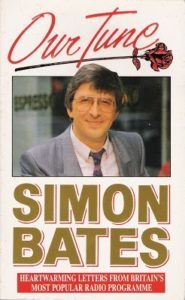 The first time I tried to write my story of how I met my Englishman at the British Embassy in Helsinki was for the ‘Our Tune’ section of Simon Bates BBC Radio 1 show. If you lived in the UK in the 80s, you cannot have escaped this section of the show where soppy ‘true’ love stories sent in by the listeners were read out by Simon Bates over Nino Rota’s Love Theme from Romeo and Juliet. But all my efforts of writing came to nothing because I just didn’t know how to tell the story. Up to that point, all I’d written was a diary and news stories at my day job with the BBC. I wasn’t equipped with the tools to write a romantic tale and just didn’t know where to start.
The first time I tried to write my story of how I met my Englishman at the British Embassy in Helsinki was for the ‘Our Tune’ section of Simon Bates BBC Radio 1 show. If you lived in the UK in the 80s, you cannot have escaped this section of the show where soppy ‘true’ love stories sent in by the listeners were read out by Simon Bates over Nino Rota’s Love Theme from Romeo and Juliet. But all my efforts of writing came to nothing because I just didn’t know how to tell the story. Up to that point, all I’d written was a diary and news stories at my day job with the BBC. I wasn’t equipped with the tools to write a romantic tale and just didn’t know where to start.
An Officer and a Gentleman
 My Englishman in his tropical uniform
My Englishman in his tropical uniformIn 1986, after I’d been married to my Englishman, a British Navy Officer, for a year, I decided to surprise him at Fort Lauderdale, a sea port town in Florida that the frigate, HMS Apollo, which the Englishman was serving on as an Officers’ Training Officer, was due to visit. He was a bit taken aback when he spotted me at the quayside as the ship was coming into dock, but that’s another story :-). While in the US, the Englishman wore his tropical uniform most of the time. This was quite a treat for me (I always loved him in uniform) because in the UK the members of the armed forces weren’t allowed to wear a uniform in public unless taking part in an official engagement, due to the very real (and scary) IRA terror threat. In the US being in uniform was not only allowed but encouraged. When out and about, with my handsome officer husband, we had many comments from the locals that we looked just like Richard Gere and Debra Winger from An Officer and a Gentleman. The film had come out a couple of years earlier. I didn’t think I looked anything like Ms Winger (I was blonde for one!), but when we were kissing goodbye at the airport and a woman wanted to take a photo of us, claiming we were the spitting image of the romantic couple, I began to think there must be something it. But I forgot all about it when I boarded the plane to fly home – alone – feeling the very real pain of yet another separation.
Robert McKee Story Seminar
 Years later, with an MA in Creative Writing, and a novel, Coffee and Vodka, under my belt, I decided to take a course called The Story Seminar by Robert McKee. This was a long, and intensive, weekend program in scriptwriting, something I thought I might try to learn. I didn’t pursue a career in that direction, but the course changed my idea of writing and story-telling forever. (But that’s yet another, different, conversation.) At the end of the course, we dissected the classic Casablanca, with Ingrid Bergman and Humphrey Bogart, examining in great detail how the tragic love story was told. Suddenly, I remembered the link the Americans had made between the Englishman in uniform and An Officer and a Gentleman. I also realized the story of how we met followed a similar pattern to the romantic film. I wondered if, at last, I might be brave enough to write a story based on how I met my Englishman. But, as usual, I got sidetracked and wrote a spy thriller, The Red King of Helsinki, instead!
Years later, with an MA in Creative Writing, and a novel, Coffee and Vodka, under my belt, I decided to take a course called The Story Seminar by Robert McKee. This was a long, and intensive, weekend program in scriptwriting, something I thought I might try to learn. I didn’t pursue a career in that direction, but the course changed my idea of writing and story-telling forever. (But that’s yet another, different, conversation.) At the end of the course, we dissected the classic Casablanca, with Ingrid Bergman and Humphrey Bogart, examining in great detail how the tragic love story was told. Suddenly, I remembered the link the Americans had made between the Englishman in uniform and An Officer and a Gentleman. I also realized the story of how we met followed a similar pattern to the romantic film. I wondered if, at last, I might be brave enough to write a story based on how I met my Englishman. But, as usual, I got sidetracked and wrote a spy thriller, The Red King of Helsinki, instead!
My Blog and The Englishman
My ‘An Officer and a Gentleman’ story had to wait until I started blogging in 2007. And even then it all happened almost by accident. When my readers asked why I came to live in the UK, I began telling the story of how I met my Englishman at the British Embassy in Helsinki. I intended to write just a few posts, but when the story ran and ran, and when I was on entry number 25, I realized I was writing a longer, partly fictional, story. Years, and many, many edits later the novel, The Englishman was finally published in 2013.
The other books in the series came about when readers wanted to know more of Kaisa and Peter’s story. I resisted for years to write the sequel, but once I began writing The Navy Wife, it was as if the floodgates had been opened! The Good Officer took just months to write, as did the prequel novella, The Finnish Girl. (If you sign up to my mailing list, you’ll get a free ebook copy of The Finnish Girl here). The last novel in the series has been a little more tricky to write, but I’m nearly there. The (yet unnamed) Book 4 will be out in October.
Over to you
Do you find it fascinating to hear where writers find their inspiration? Or if you write yourself, what inspired you to write a particular story? Comment below and start the conversation going!
The post How a film inspired The Englishman series appeared first on Helena Halme Author.
July 13, 2017
New Book Releases
This is the first of a monthly series, New Book Releases. My aim is to introduce you to new authors and books you may not have heard about. The books will be in various genres and I may even throw in the occasional non-fiction title. The posts will be up on 2nd Thursday of the month.
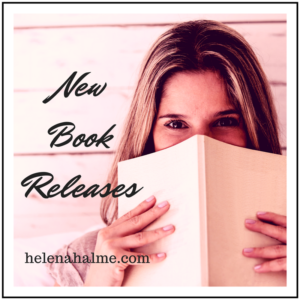
This July, I’m speaking with Clare Flynn, a historical novelist. Her latest title, The Chalky Sea, was out earlier this month, so you’re going to find out about a very new book indeed! I hope you enjoy reading about this month’s New Book Release.
1) Please start by telling us about your writing. How would you characterize your fiction?
First and foremost I aim to tell a good story. I want people to find it hard to put my books down. I know it’s working when I get emails from readers telling me they have stayed up all night or cooked their supper with the book in their hand. That means having characters that people care about – whether you love them or hate them – and I have a mixture of both sorts. My baddies are never wholly bad and the goodies always have flaws.
One of the start points for my books is location. There are some places that call out to me and get me thinking –who has been here before? What were they doing? Back in 1996 I went to Sri Lanka and can still remember the story I made up in an old ex-colonial country club there –I haven’t used it yet. I also take a lot of inspiration from landscape. I see location as another character.
In terms of themes, I write a lot about displacement – often geographic, but always out of the comfort zone. I like grabbing my characters and putting them in places and situations that will cause them to struggle.
2) Your latest release is a historical novel called The Chalky Sea. How would you describe the novel?
It is set during World War 2 and tells two intertwined stories – two characters both with troubled pasts – and the two threads come together before the end of the book.
One strand is about Gwen, a thirty-something woman, childless, whose husband is overseas fighting in an unknown location for what we now know to be Special Operations, but then was shrouded in mystery. Gwen appears emotionally cold, but has a lot of suppressed feelings. She is stranded (by choice) in Eastbourne after most of the townspeople have been evacuated due to the bombing and the expectation that it will be a beach-head for the German invasion. War allows Gwen to escape from what has been a humdrum life and find purpose and meaning.
The other main character is Jim, a young Canadian farmer. After agonising whether to join up, he makes his decision on discovering the secret his fiancée has been keeping from him. War for Jim, unlike Gwen, at first, is a dull affair. Stuck in the British army garrison at Aldershot, he is far from the action and more likely to die of boredom than enemy fire.
These are two people who would never have met in normal circumstances – people from different worlds are flung together by the war. It is about how that brings about changes – good and bad.
3) The Chalky Sea is a historical novel set in the 1940s. Tell us about your research for this story?
Two books were massively helpful.
The first was Eastbourne at War by George Humphrey. This was published by the local newspaper group and is full of detailed accounts of the bombings and the casualties inflicted, as well as atmospheric photographs that really bring home the devastation caused by the air raids.
The second, Canucks by the Sea by Michael Ockenden, offered a wealth of information on the Canadian wartime presence in the town.
On top of these subject-specific books, I did a lot of reading about Canada, the Canadian army, wartime Britain and 1940s Eastbourne. I visited museums and talked to Eastbourne people who were around during the war. I watched movies set in the period – and made in the period.
I visited most of the locations in the book – although not Ontario. I hope to organise a Canadian trip in the near future as I am now writing a sequel set in Canada.
4) I’m always fascinated by how authors find their subject matter. What inspired you to write The Chalky Sea?
I spent my teenage years in Eastbourne, but was completely ignorant of the town’s role in the Second World War. When I moved back here just over a year ago, I happened upon some information online about the town during the war and – surprised at its significance – set out to learn more. What I uncovered made it impossible for me to resist writing about it – although this was not part of the plan when I moved here!
I have always loved wondering who might have been in places I have lived in in the past, and as soon as I moved into my 1900 house up above the town, I started imagining who might once have gazed from the same windows over the grey-green chalky sea – and that’s where Gwen came in. Once I found out that the Canucks parked their tanks at the top of my road, and that the first German plane shot down over the town landed in a school playing field at the other end of my road how could I resist?
5) Your background is in marketing and business. How do you think your previous experience has helped you in your career as an author?
I don’t think it’s helped me as an author in terms of writing – but I suppose it is helping me as a publisher. It probably also helps me in my research – sorting the wheat from the chaff, organising information, knowing where to look.
I suspect I also underestimate how much it helps me – as I find marketing myself as an author and marketing my books so much harder than in my business career – but I am sure some things are second nature to me so I take them for granted. That said, book marketing is a huge learning curve!
6) Which other writers have most influenced you?
Aaagh! I hate this question as there are so many. I read more when I was younger and without the distractions of social media, email and streaming TV. I still read voraciously – but at MUCH slower rate than before.
I have always loved “the classics” – particularly the Brontes, Thomas Hardy, George Eliot, Henry James, Charles Dickens, Jane Austen, Edith Wharton, Scott Fitzgerald, Faulkner. My early influences included Agatha Christie, Anya Seaton, Alan Garner, Arthur Ransome, Cynthia Harnett, Howard Spring, Nevil Shute – and anything I had to hide under the pillow from parental control – including Jacqueline Susann’s Valley of the Dolls.
7) What is your experience of being an indie author and do you have any good tips for aspiring indie authors?
I never set out to be an indie – I started down the traditional route with a literary agent who worked really hard to sell my first book. When it didn’t sell to a publisher, I decided to experiment with self-publishing and have never regretted the decision. I love the control you get from being indie and I have discovered a wonderful supportive community of other indie authors.
My top tips are:
Don’t stint on editing. It just isn’t worth it and will cost you in the long run. If you can’t afford it, save up – or barter – there must be something you can offer as payment in kind! Or swap with another author – at least it’s a fresh pair of eyes – although editing and proof reading are specialised skills that most of us (and I am an English graduate but include myself) don’t possess.
Join the Alliance of Independent Authors. It has been the best money I’ve ever spent – and you’ll earn the subscription back right away in the discounts you can earn on a multitude of essential services. On top of that you’ll access brilliant advice and meet lots of lovely people (like Helena).
8) Tell me a little about your previous books. Would you say there is a common thread running through your novels?
Probably displacement.
A Greater World is set in Australia in 1920 and tells the story of Michael, a lead miner, and Elizabeth, a middle class woman who meet on a voyage to Sydney from Liverpool. They never should have met – but a classless ship flings them together. Both are torn from familiar surroundings and each has to make their way in a tough new world.
Kurinji Flowers is about Ginny, a debutante in 1936, who is disgraced and jumps into a marriage as an escape route. Adapting to colonial life in India is a struggle and Ginny is caught between two cultures, afraid of one and rejecting the other.
Letters from a Patchwork Quilt begins in 1875 and moves from Derby and Bristol to New York, St Louis and Middlesbrough. Eliza is stranded, penniless, en route to America and Jack is forcibly displaced to the north of England. Both are torn out of their idyllic lives into tough challenges – but they respond in very different ways.
The Green Ribbons is about Hephzibah, orphaned at eighteen, and thus compelled to become a governess. She is ill prepared for the life she is thrust into. How will she cope – with a lecherous employer, his attractive son and in a village going through great changes?
9) What are you working on at the moment?
I’m writing a sequel to The Chalky Sea – my first ever sequel. Usually I want to move on from the characters once I finish a book, but I felt I had unfinished business to explore and as this will be set in Canada it feels fresh to me.
10) What do you like to do in your spare time?
I love travelling – visiting new places. I used to be more adventurous – far flung continents and physically challenging activities – but now I prefer staying closer to home – ideally within Europe. I’ve had my fill of long haul flights – well for the moment anyway.
I love to paint and always take sketchbooks and paints away with me.
My other pastime is quilting. My first-ever quilt features on the cover of Letters from a Patchwork Quilt. Recently I’ve become rather taken by baking – a bit of a surprise to me as I always thought I’d hate it! I’m just about to make a lemon drizzle cake.
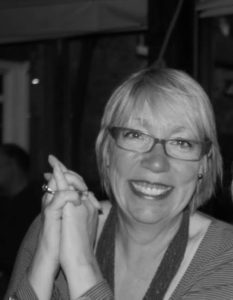 Where can we find more about The Chalky Sea and about Clare Flynn, the author?
Where can we find more about The Chalky Sea and about Clare Flynn, the author?
On my website www.clareflynn.co.uk
Or my Amazon page http://author.to/clareflynn
And Goodreads https://www.goodreads.com/author/show/6486156.Clare_Flynn
Or you can follow me on Twitter @clarefly or Instagram @clarefly
Best of all sign up for my occasional emails – I don’t bombard people with them – just when I have some important news to share or a great offer or giveaway. If you sign up – on the home page of my website you will immediately receive for free my collection of short stories A Fine Pair of Shoes.
Thank you so much, Clare, for your interesting answers and for agreeing to be the first author in my New Book Releases blog series! I cannot wait to read the sequel to The Chalky Sea, which I’m reading and enjoying immensely at the moment!
The post New Book Releases appeared first on Helena Halme Author.
July 10, 2017
Time Sensitive Book Offer
I thought I’d let you know of a quite amazing book offer.
Between 10th and 16th July THE ENGLISHMAN BOXED SET is on a very short and rare promotion. The price will be JUST $0.99/£0.99/€0.99 for the six days. As you probably know, this is a huge discount. The boxed set contains the first three novels in the series.
She is a student from Finland. He is a dashing British Navy Officer. Can their love go the distance?
The first three books in this best-selling tumultuous love story between a beautiful Finnish student and a handsome British Navy Officer are now compiled into one beautiful boxed set! The Englishman series, a long-distance military romance set in 1980s Finland and Britain is ‘unputdownable’ and a ‘must read’!
Based on a true story, these books will make you laugh, cry and lose your sleep while you race to read to the end.
Here are some 5***** reviews:
“I had difficulty in stopping myself from devouring The Englishman in one go”
“Another winning combination of romance in a recent historical setting, with culture clashes between Finnish and English and civilian and military, with a determined yet vulnerable Nordic heroine, dashing stiff-upper-lipped Englishman, plus all the frogs they kiss along the way in their tense on again, off again romance.”
“Helena Halme has the knack of getting the balance just right to keep the reader engaged from the first page to the last, enjoying Kaisa’s turbulent journey as she grows and develops a little more with every book. An addictive series!”
THE ENGLISHMAN: CAN LOVE GO THE DISTANCE?
THE NAVY WIFE: CAN LOVE STAY ON COURSE?
THE GOOD OFFICER: CAN THEY LOVE AGAIN?
All the three books in the series are now just $0.99!
The normal price of The Englishman Boxed Set is £3.99/$4.99 which already offers a saving of 50% against buying the books separately, so you can see what great value this LIMITED TIME promotion at just $0.99 offers!
If you loved An Officer and a Gentleman’ or like Scandinavian fiction, you will love this ‘stylish Nordic’ series of novels on the tumultuous love affair between a Finnish student and dashing British Navy Officer.
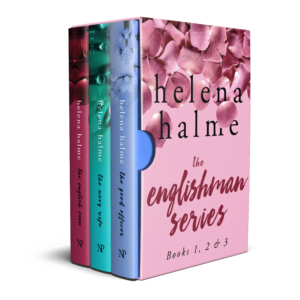
The Englishman Boxed Set will not be on a similar offer again soon, if ever, so don’t miss your chance. Get the ebook boxed set now! Tap the image above or go here to buy.
The post Time Sensitive Book Offer appeared first on Helena Halme Author.
June 29, 2017
Faslane Naval Base Peace Protests and The Navy Wife
It’s interesting to see that the peace protestors are going to be active in Faslane Naval Base again. According to Helensburgh Advertiser, the local Scottish newspaper, talks are being held in advance of a temporary protest camp near Coulport where the warheads for the Trident nuclear submarines are being stored. The protest will take place in July 8-14th and I am very tempted to go along!
 The peace protestors were a huge inspiration to me when I was writing the second book in The Englishman series
The peace protestors were a huge inspiration to me when I was writing the second book in The Englishman seriesKaisa, the hero of The Englishman -series of books lived in Helensburgh in the 1980s a few years after my husband-to-be, (my Englishman) was also based at Faslane (although he didn’t serve on the nuclear deterrent subs). At the time, there was a large permanent peace camp on the road between Helensburgh and the base. It had been set up in 1982 beside the A814, and later the local council rented the site to the Peace Camp for a peppercorn rate of £1. They held regular protests against the Polaris submarines (predecessors to Trident), stopping the cars going between the base and the town. Sometimes they would rattle the fence of the base in the early hours of the morning, wanting to disrupt the lives of the naval personnel living in the housing blocks on the base, or spray paint the signs outside the base.
When I was researching the camp and the protests for The Navy Wife, I came across these pictures. The top one shows the local police pulling protestor off the fence, the second a sign on one of the gates, which had been turned into H.M. MURDER BASE. These two incidents were too good not to use as a piece of real life in my books.
Much of the story in The Navy Wife centers around the peace protest
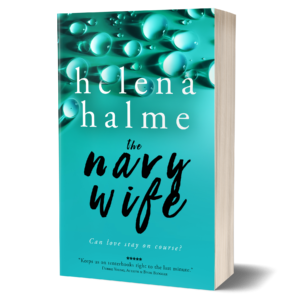 I’d always been very interested in Nuclear Disarmament, and after I moved to Britain, I followed the news about the camps at Greenham Common and the one in Faslane closely. Watching the news on TV, I often wondered how the police felt when they were pulling women off fences in Greenham, or dragged protestors off the road in Faslane. The conflict between the peace protestors and the people who worked for the Navy, or were married into the services, was also incredibly fascinating for me, so I decided to set the second book in The Englishman series up in Faslane to explore this conflict.
I’d always been very interested in Nuclear Disarmament, and after I moved to Britain, I followed the news about the camps at Greenham Common and the one in Faslane closely. Watching the news on TV, I often wondered how the police felt when they were pulling women off fences in Greenham, or dragged protestors off the road in Faslane. The conflict between the peace protestors and the people who worked for the Navy, or were married into the services, was also incredibly fascinating for me, so I decided to set the second book in The Englishman series up in Faslane to explore this conflict.
In the second book in The Englishman series, Kaisa battles with her conscience: she agrees with the protesters but also loves her husband, Peter. She cannot share her thoughts with anyone because she’s married to a Royal Navy Officer serving on a Polaris submarine, and all the other wives around her view the peace protestors at the roadside camp with disgust and suspicion. Kaisa ends up befriending one of the protestors, something which she has to keep as a secret from her husband and the rest of the naval community.
The friendship with a member of the CND (Campaign for Nuclear Disarmament) and Kaisa’s political views are just few of the problems she faces as a newly married Navy Wife. I loved writing about this pesky, but hopelessly naive and very lonely young woman as she struggles to come to terms with her new life in Britain. I have to admit that I too, when I first moved to the UK, faced similar problems. Some of what I felt then is described in the books. Luckily, my Englishman didn’t serve on what the Navy called the ‘Bombers’ in Faslane, so we were never based up there together. I’m quite sure that if he had, we would’ve had very similar troubles brewing in our marriage, as Kaisa and Peter had in their tumultuous relationship.
You can find out more about The Navy Wife and read a free sample here.
The Englishman series is now out as a Boxed Set

The Englishman series is also now compiled into a beautiful (thank you Jessica Bell) boxed set. The set includes The Englishman, the first, best-selling novel which has been ranked as no 1 on Amazon, the sequel The Navy Wife and the latest novel in the series, The Good Officer. The boxed set is only $4.99/£3.99 for over 900 pages of ‘stylish, gritty romance’.
Read more about the boxed set here.
The post Faslane Naval Base Peace Protests and The Navy Wife appeared first on Helena Halme Author.
June 20, 2017
Advice for New Authors: Five sure-fire ways to find your book’s genre

You’ve finally written your book and now people keep asking you what genre your book falls into. But the last thing you want to do is to pop your valued, unique work into a box, so you say, ‘It doesn’t really fit into any genre.’
Wrong, I’m afraid.
On Amazon Kindle store there are thousands of fiction categories alone, from sweet wholesome romance to dark fantasy horror and everything in between. And that doesn’t take into account the nonfiction side. Your book will fit into one category, or two or ten. Placing a book into a category isn’t a bad thing; you are in no way devaluing your work. Rather the opposite, you are giving potential readers the chance to discover your title. Imagine a shop where all books are in a jumble on the floor. No-one will find a title at the bottom of the pile, neither will anyone know what the books are about if they’re not organised in shelves by fiction, nonfiction, subject – and genre. Below I talk mainly about fiction, as nonfiction books are more easily defined by their subject matter.
How to find your book’s genre?
Here are five sure-fire ways to find the correct category, or genre, for your book.
Plot
[image error][image error]First of all, look at the plot of your book. Is it action-filled, or slow-paced? If the former, it probably fits into the Mystery, Thriller, and Suspense category (see Lies by T M Logan). If the pace is less hectic, your book might be a Romance or fall into the Literary Fiction genre. Books which are character-led, meaning the action takes place in the heads of the characters, are often classified as Literary Fiction. But be aware that this category is very general, which means you are amongst many, many titles. It is also the category that sells a fewer number of books than, say, Romance.
Main idea of the book
[image error]What is the main idea of the book? Does the girl get her man or woman (Romance)? Does the main character solve an intricate plot to overthrow the government in a near-future world (Dystopian Thriller) while falling in love with her best friend (Dystopian Romance)? See Genre Game by Bella Forrest. Perhaps it’s a modern satire or a tale of love full of funny twists? (Romantic Comedy). I have a theory that most books are really about love, although the main driver of the plot can be anything from solving a crime to surviving an earthquake or finding a long-lost relative. In order to find the correct genre, you need to ask yourself, what is the book actually about?
Setting
[image error]What about the setting of the book? Does the narrative take place in the past and characterized chiefly by an imagined reconstruction of historical events? In this case, you are looking at a Historical Novel. As an example, see books by the best-selling historical fiction author, Clare Flynn. Her latest novel, The Chalky Sea is now on pre-order. (See also a guest post here on how to write historical fiction by Clare Flynn.) If the setting of your book is current (this means approximately up to 50 years in the past), the book will fall into Contemporary Fiction genre, if it is in the future, it could be Dystopian Fiction. (But don’t forget the all-important sub-genres – see below).
Protagonists
[image error]What about the age and sexuality of your protagonists? Are they adults, teens or children? If they are gay, you can take advantage of a growing Lesbian, Gay, Bisexual & Transgender category. See for example Owning It by Riley Hart, the current gay romance number one Kindle read on Amazon. Children’s fiction also has many sub-genres, all the way from Baby up to Teen and New Adult. With Children’s Fiction, it is particularly important to know what age group your book is aimed at. The marketing of a book for small children, who rely on their parents for their book choices, is completely different to that of a book that is aimed at Teens, who buy their books themselves.
[image error]Similar to …?
Now look at the books you read yourself. Does your novel remind you of the books you have loved? Go to Amazon and scroll down to the books, and see what categories they are listed in. I love Liane Moriarty’s novels and found that her books are all listed under Contemporary Romance and Women’s Fiction, so that is where I first pitched my novels too. Of course, both of these are huge categories, so I needed to drill down a little more to find my particular sub-category (see below).
Do your research
It’s important to research thoroughly the genre and category of your book. The BISAC Subject Codes are a good starting point for categories, after which exploring Amazon’s sub-genres that your book might fall into will be invaluable. Doing your research will pay dividends later. BISAC and Amazon are excellent places to explore different categories, but if you wish to drill further and make the process a little less time-consuming, I’d recommend K-lytics reports. They are not free, but I found them incredibly useful. For a first-time author, I’d recommend buying a report on the genre you think your book is, which is very reasonable and completely comprehensive account of sub-genres and their popularity. When you have a few titles under your belt, an annual or even lifetime membership will be more suitable. (I am an affiliate of the company, so if you click on the link, you will support this blog).
Don’t forget the sub-genres
[image error][image error]When I published my first title, The Englishman, I struggled to find the right genre. I knew The Englishman series of books were Contemporary Romances, telling the tale of a long-distance love affair between a young Finnish student and a dashing British Navy Officer. The books are also Nordic and Military, but don’t contain any explicit sex scenes, something which seemed to be the norm with the latest contemporary romance genre novels. When I looked at the categories, I found that Nordic titles were all dark detective novels (think Stieg Larson or Jo Nesbo) and Military Romances about Navy Seals with book covers littered with bare-chested men. The rose petals on the covers of my titles looked completely out of sync with either of these categories. It wasn’t until I bought the Romance Genre Report from K-lytics that I found there was a growing category on Amazon called Clean and Wholesome Romance. I would never have put my novels in this category, but when drilling down further, found that this was the perfect place for my books. Naturally, they also fit into the other general categories, like Contemporary Women’s Fiction and Contemporary Romance, but finding a select sub-category was an important revelation and has certainly been reflected in my book sales. To get the latest report on Clean and Wholesome Romance, go here
Up to 10 Book Categories
When you publish your book on Amazon KDP, you are allowed two categories. Other bookstores such as iBooks, GooglePlay or Kobo all have their set numbers of categories too. However, with Amazon KDP, you are allowed up to ten categories per book, but you have to email Amazon through the Author Central page to include the additional categories. Also, remember that the keywords (you are allowed 7 per book on Amazon KDP) need to work with the categories; for example, my books now have ‘clean romance’ as a keyword because they are in the Clean and Wholesome Romance category. Make sure, however, that when you email Amazon, you put the categories in the correct format, ie.
Kindle Store > Books > Literature & Fiction > Women’s Fiction > Romance
The top categories on Amazon at the moment by K-lytics
Literature & Fiction
Romance
Mystery, Thriller & Suspense
Science Fiction & Fantasy
Nonfiction
Teen & Young Adult
Biographies & Memoirs
Children’s eBooks
Religion & Spirituality
History
Business & Money
Health, Fitness & Dieting
Lesbian, Gay, Bisexual & Transgender eBooks
Self-Help
I hope I have demystified some of the issues around a book’s genre. In this age when the metadata is increasingly important to find the right readership for your book, it pays to take some time to find the right genre, categories, sub-categories, and keywords.
Which genre does your novel (or book) fall into?
Want to be notified of a new blog post? Sign up to the feed by tapping here or the image below now.
The post Advice for New Authors: Five sure-fire ways to find your book’s genre appeared first on Helena Halme Author.
June 14, 2017
Do You Read Erotic Fiction?
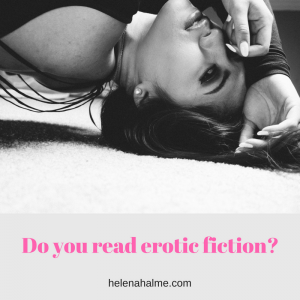 If you like romance, you may also like reading erotic fiction
If you like romance, you may also like reading erotic fictionThere was a time not so long ago, when erotic fiction in the UK was confined to shady Soho establishments, and even the fabulously stylish The Erotic Review (now sadly no longer available in print form) was posted in an innocuous envelope, not revealing its contents, just in case the postman, or your neighbours, be offended.
Then, six years ago, in May 2011, the first book in The Fifty Shades of Grey trilogy was published. These erotic books took the publishing industry by storm because it was, firstly openly erotic, secondly self-published and sold in its millions as an Ebook. And it was said to be revolutionary because the audience was predominantly (dominance being the operative word!) women readers.[image error][image error]
Of course, there was a plethora of criticism leveled at the series of books by the traditional publishing industry, until the big publishers woke up to the opportunities a best-seller such as the three books provided. Now E L James is a millionaire, and the books are traditionally published and turned into two films so far. We can discuss the quality of the writing of those books until the cows come home, as well as the portrayal of the female and male characters and the power they had on each other, but I think the important lesson we should take from the success of those books is that yes, women do like sex. And yes, the female of the species also likes to read erotic fiction.
There is such a thing as brilliantly written erotic fiction
Perhaps Fifty Shades of Grey failed to make sex intellectually viable and emotionally relevant on the page, but this is not true of all fiction that deals explicitly with romantic love. Erotic fiction shouldn’t be intellectually inferior just because it describes an act that is deemed by society somehow dirty, and certainly naughty. Writing sex, like writing in general, is intellectually challenging, and difficult.
Sex should be like eating a mango
At a recent BareLit festival discussion, author Leone Ross, an award-winning author whose collection of short stories (some of which can be classified as erotic), Come Let Us Sing Anyway, is just out, commented, ‘Sex should be like eating a mango, wonderful and delicious, but natural.’ The talk, titled, ‘Sexy Times’ centered around how the patriarchal society has for too long portrayed sex as a male domain, and through it oppressed women and their natural sexuality. How moralistic rules of what is allowable and not allowable are still in force around the world. Women in sexual relationships are portrayed as submissive and innocent, while men are experienced and in control. Women are submissive, things are done to them with or without the woman’s consent, let alone enjoyment.
Anyone who has been in a fulfilling sexual relationship knows that the rules are set by those involved, not anyone outside, and that as long as those involved are consenting adults, rules are immaterial.[image error][image error]
Erotic fiction is empowering
Leone Ross also says, ‘Being a woman writing about sex means that I am a woman walking free around the world.’ And I guess this is the point of erotic fiction; to be able to write about a subject still so taboo (especially for women) around the world is a wonderful thing.
Religion and Erotic Fiction
A new Muslim Erotica novel, Uqasha, has recently been published by an independent publishing house, Fixi London. Uqasha started as a serial on Wattpad, updated 3 times a week for a year. It currently has more than 5.64 million readers. Written in Malay, it is now available in English for the first time. Uqasha explores a woman’s sensuality at the same time as she circumvents her ways around the religion around her relationship and marriage. The text describes the emotional and physical relationship, as well as how the two lovers wake up the next day to pray together.
[image error]
Financial Times and London Evening Standard critic, Arifa Akbar, says, ‘Uqasha offers a paradox in its invention of ‘moral’ erotic fiction which defies the narrow preconceptions of the Islamic faith by putting Muslim values and characters – and challenges to these values – at its heart. A quietly subversive twist to the erotic fiction genre, and a bold, brave debut.’
Do you read erotic fiction?
Comment below and start the conversation going!
Would you like to get my new posts directly to your inbox? Tap the image below and sign up now.

The post Do You Read Erotic Fiction? appeared first on Helena Halme Author.

